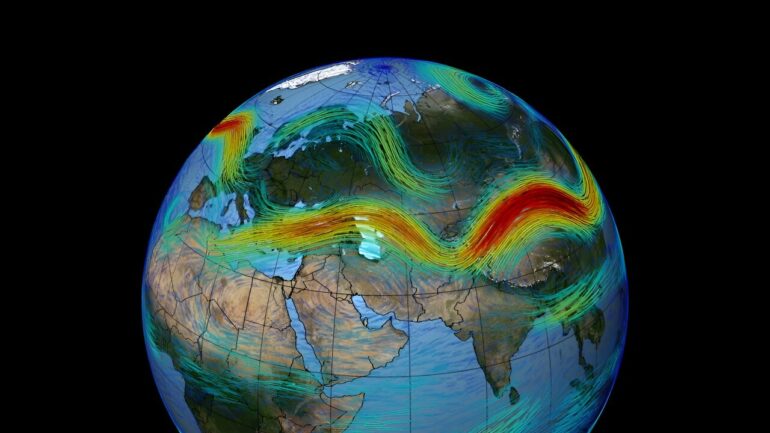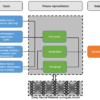A new study in Nature Climate Change takes one of the first deep dives into how climate change will affect the fastest jet streams—the powerful, narrow winds in the upper atmosphere that steer much of the Earth’s weather systems and are connected to outbreaks of severe weather.
The research, by UChicago Prof. Tiffany Shaw and National Center for Atmospheric Research scientist Osamu Miyawaki, suggests that as the world warms, the fastest upper-level jet stream winds will get faster and faster—by about 2% for every degree Celsius the world warms. Furthermore, the fastest winds will speed up 2.5 times faster than the average wind.
“Based on these results and our current understanding, we expect record-breaking winds,” said Shaw, “and it’s likely that they will feed into decreased flight times, increased clear-air turbulence and a potential increase in severe weather occurrence.”
Wind, weather and warming
Partly prompted by recent news reports of speed-record-breaking flights over the Atlantic, Shaw and Miyawaki began to investigate and realized there had been very little exploration of how the very fastest jet stream winds would respond to climate change.
To fill this gap, they combined climate change models with what we know about the physics of jet streams.
Jet streams usually move from west to east around the globe in the upper atmosphere, about six miles (10 kilometers) above us. We know that jet streams strongly influence the weather we experience on the ground—especially air temperature, winds and weather patterns, and storms. They also influence the occurrence of severe storms, tornadoes, hail and severe wind.
Jet streams form because of the contrast between the cold, dense air at the poles and the warm, light air in the tropics, in combination with the rotation of the Earth. (This was first shown in the 1900s by pioneering UChicago meteorologists Carl-Gustaf Rossby and Dave Fultz.)
Shaw and Miyawaki’s analysis found that climate change intensifies this density contrast. As the air in the tropics warms further, it will hold much more moisture. While the air at the poles will also warm, hotter air can hold so much more moisture than cold air that the overall density difference only increases—and sharply.
“The increase is multiplicative—about 2% per degree—rather than linear,” said Shaw. “Thus, not only does it go up over time, the steeper the contrast you start with, the larger the increase you get—leading to fast winds getting faster.”
They ran tests with models of the Earth’s climate, and found this fundamental physical explanation was very robust. “If you take away the ocean currents in the models, you still see this behavior. Same thing even if you remove all the land,” Shaw said. “This combination of simulation and understanding is what justifies us telling policymakers to take this seriously.”
Downstream effects
Though the findings are robust, more research will have to be done to predict exactly how these faster winds will impact individual storms and severe weather occurrence.
While the current generation of global climate models represent the jet stream well, extreme events like severe weather events, which occur on smaller scales, are not included—making it harder to predict how they will change. New, more detailed climate models, which represent severe weather, are starting to come online and should help a fuller picture emerge. “It’s really important for policymakers and communities to be able to plan for the future,” she said.
While faster trans-Atlantic flights might not seem so bad, the flip side is that planes are likely to experience more turbulence, Shaw said.
The scientists said though record-high jet stream wind speeds have been observed in the past decades, the effect is not statistically significant yet. “We would expect the signal to emerge in the next few decades, if humans continue the path we’re on with carbon emissions,” Shaw said.
“In the end, it’s important to remember that we’re in the driver’s seat here.”
More information:
Tiffany A. Shaw et al, Fast upper-level jet stream winds get faster under climate change, Nature Climate Change (2023). DOI: 10.1038/s41558-023-01884-1
Provided by
University of Chicago
Citation:
Jet stream will get faster as climate change continues, study finds (2023, December 7)



